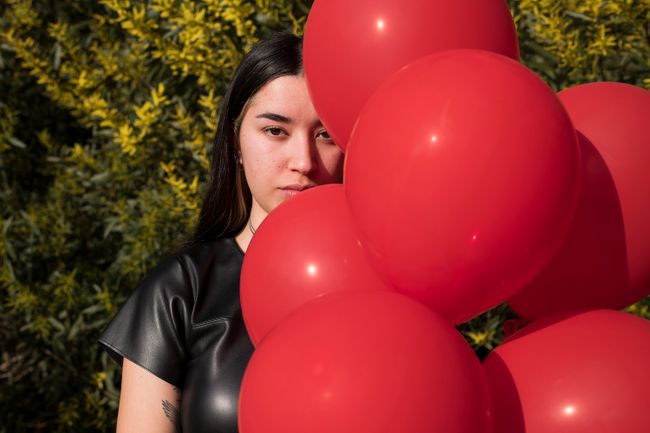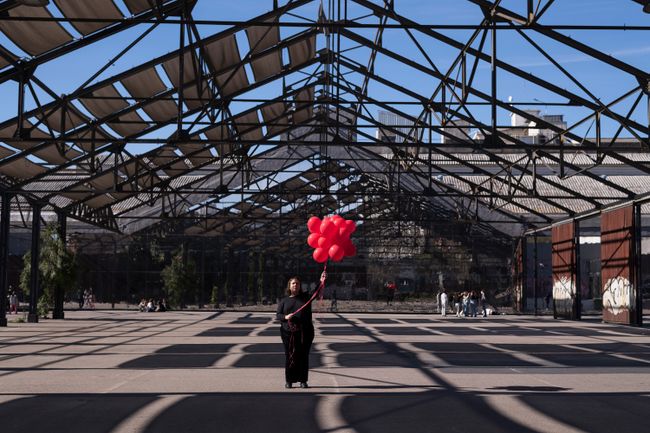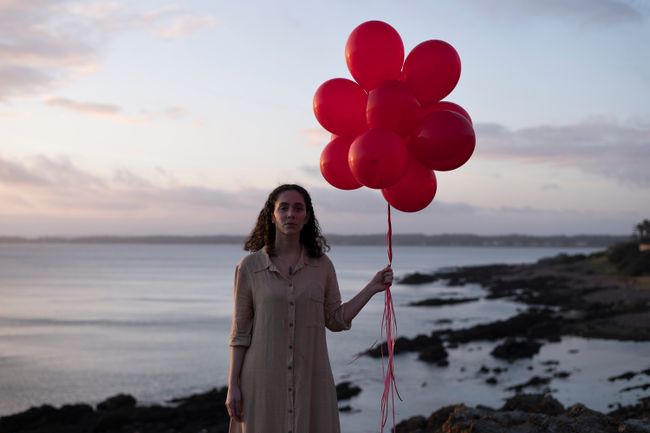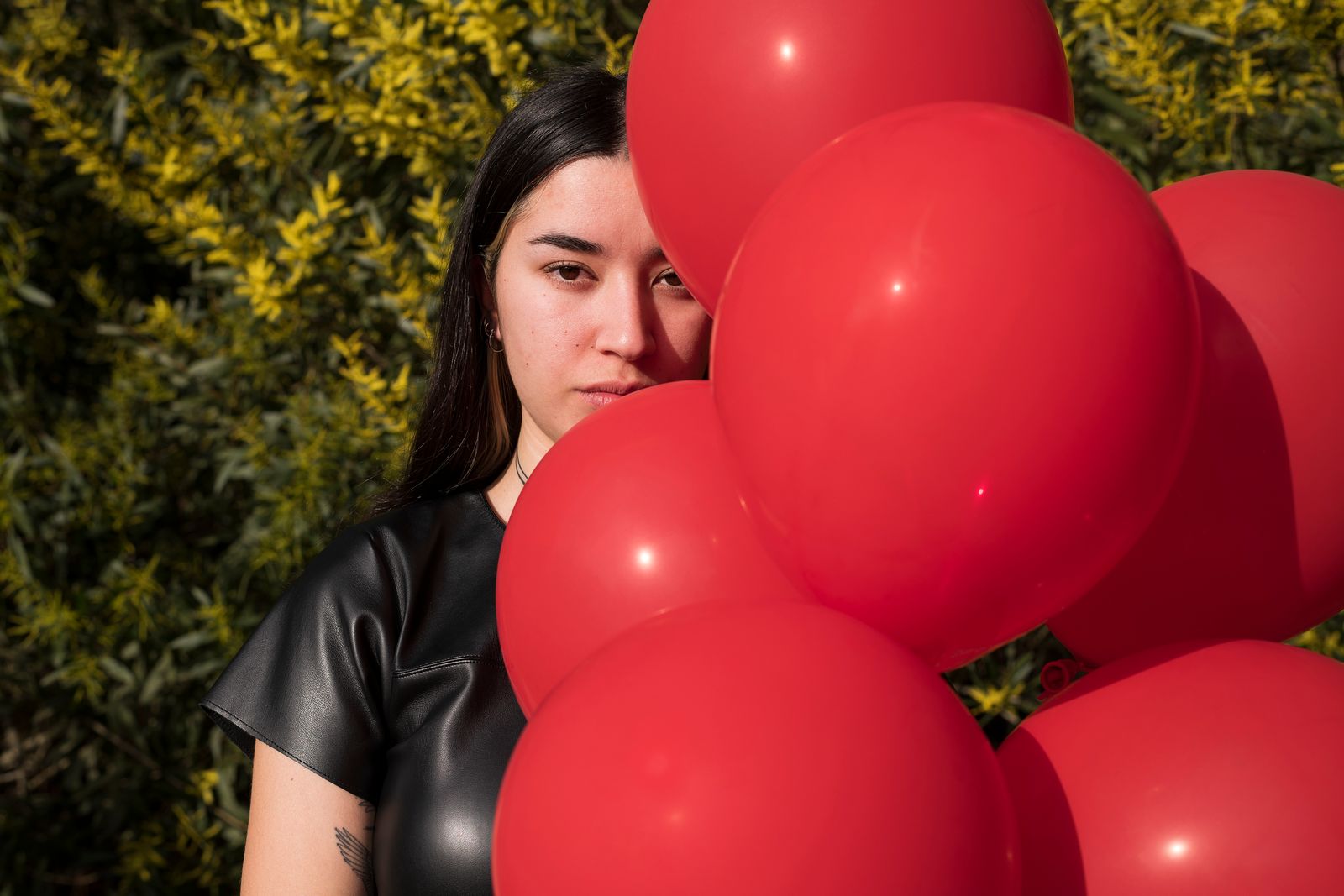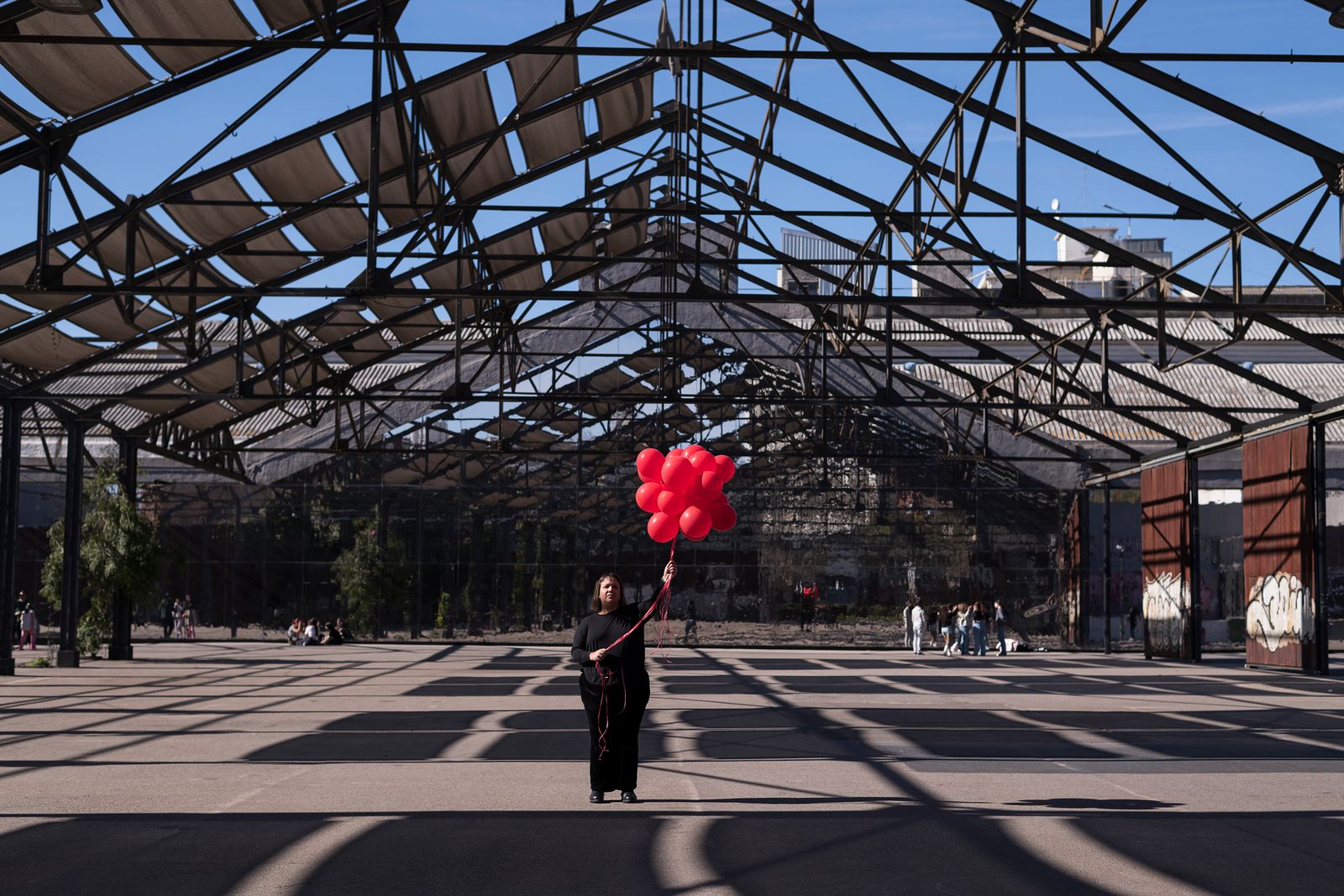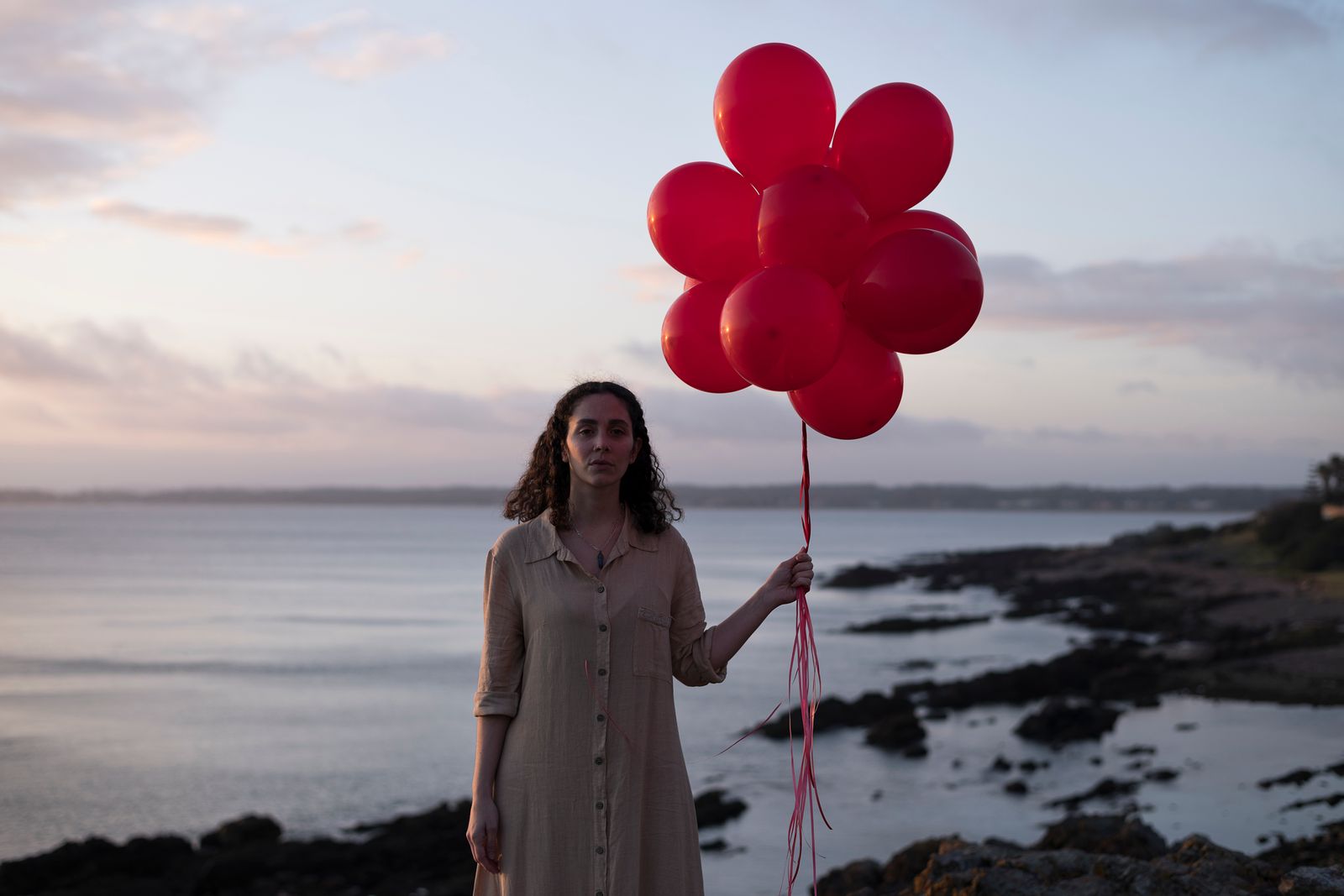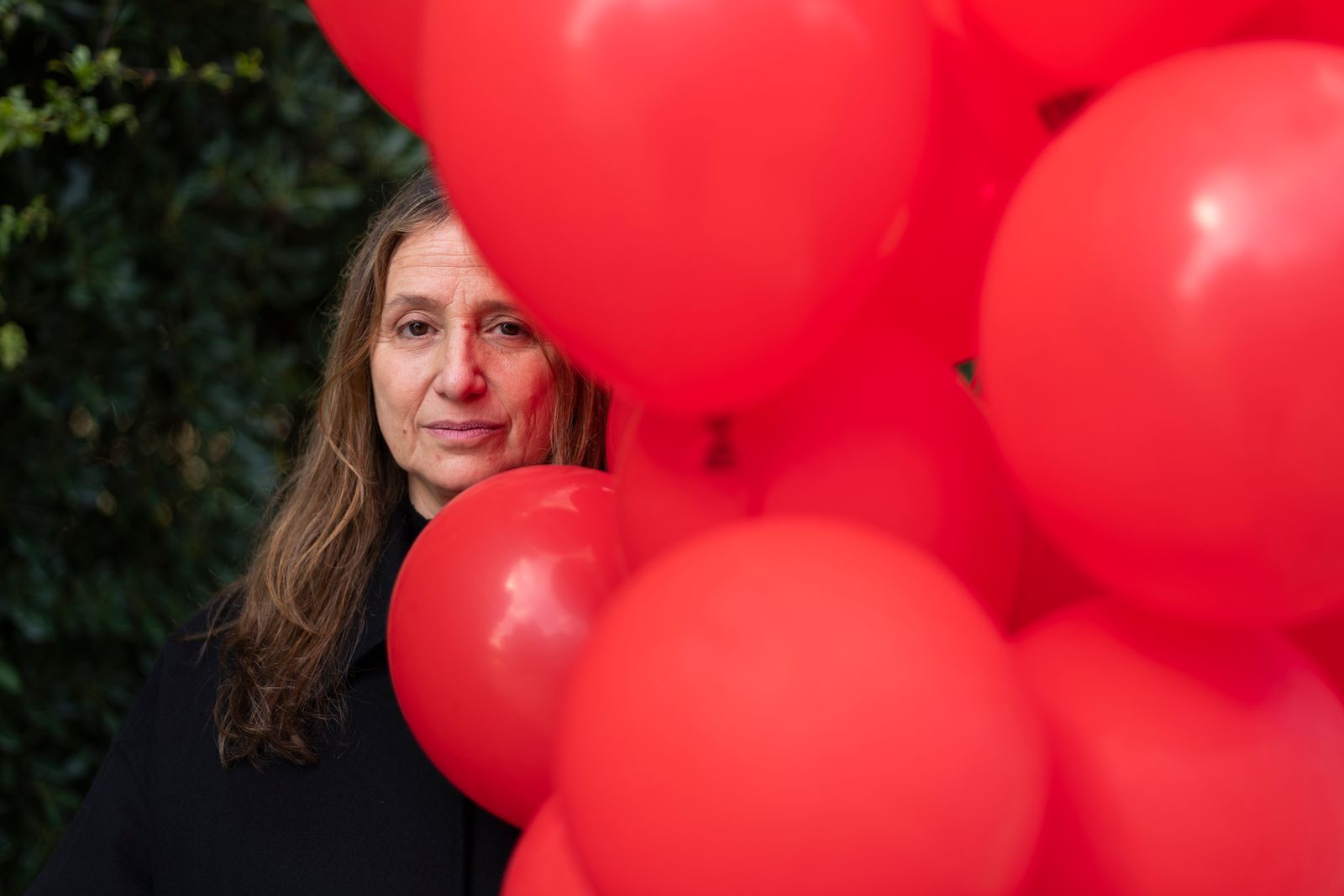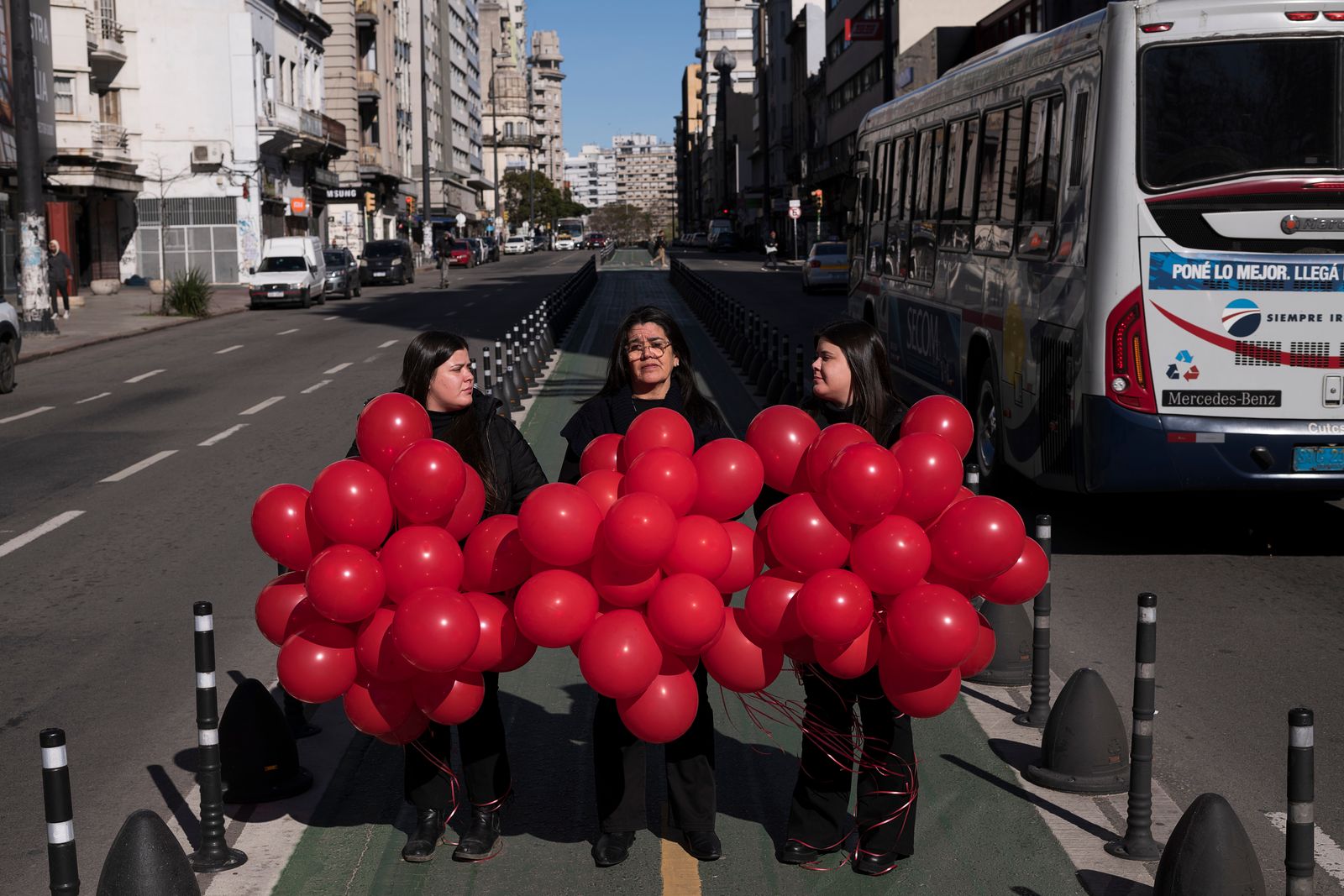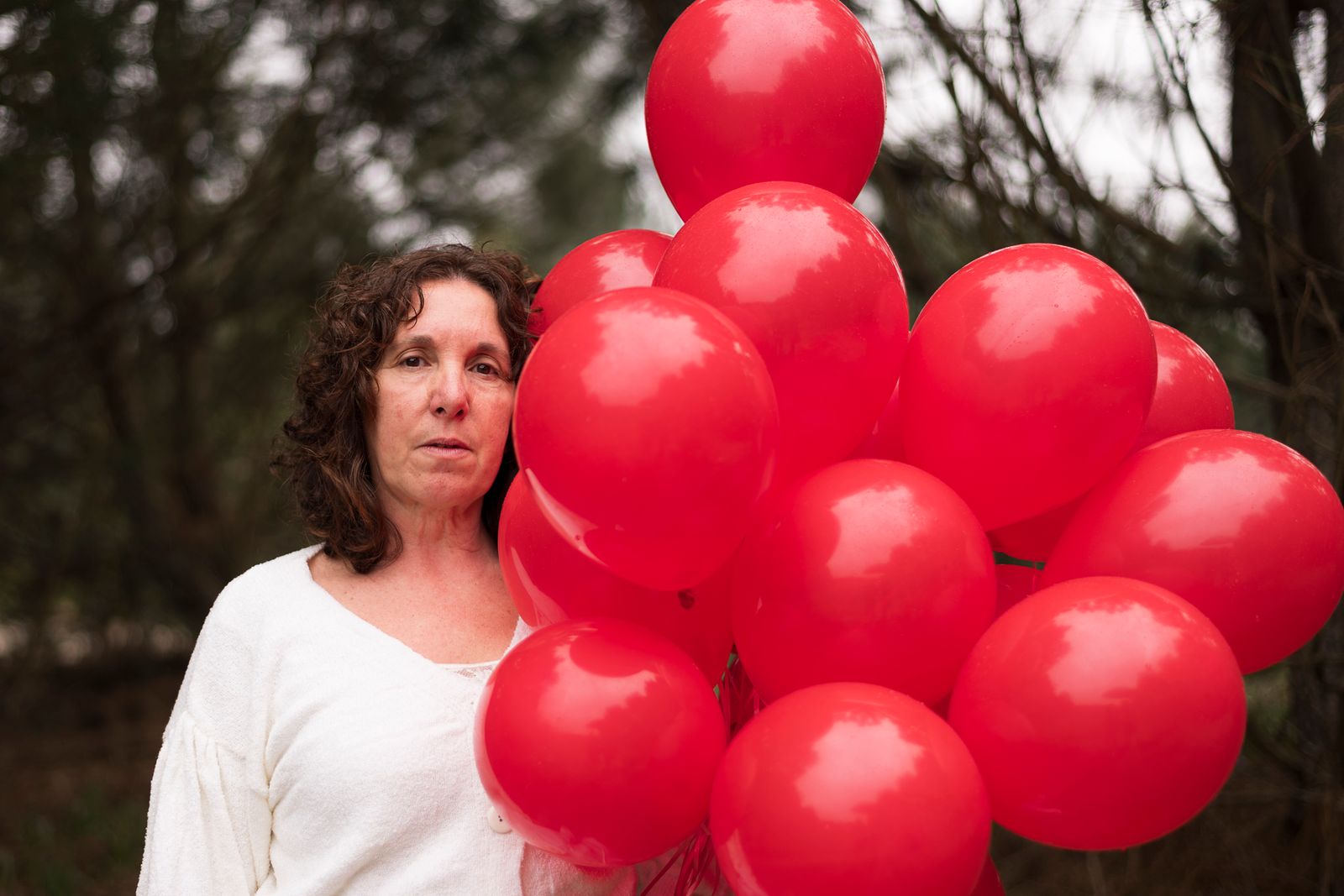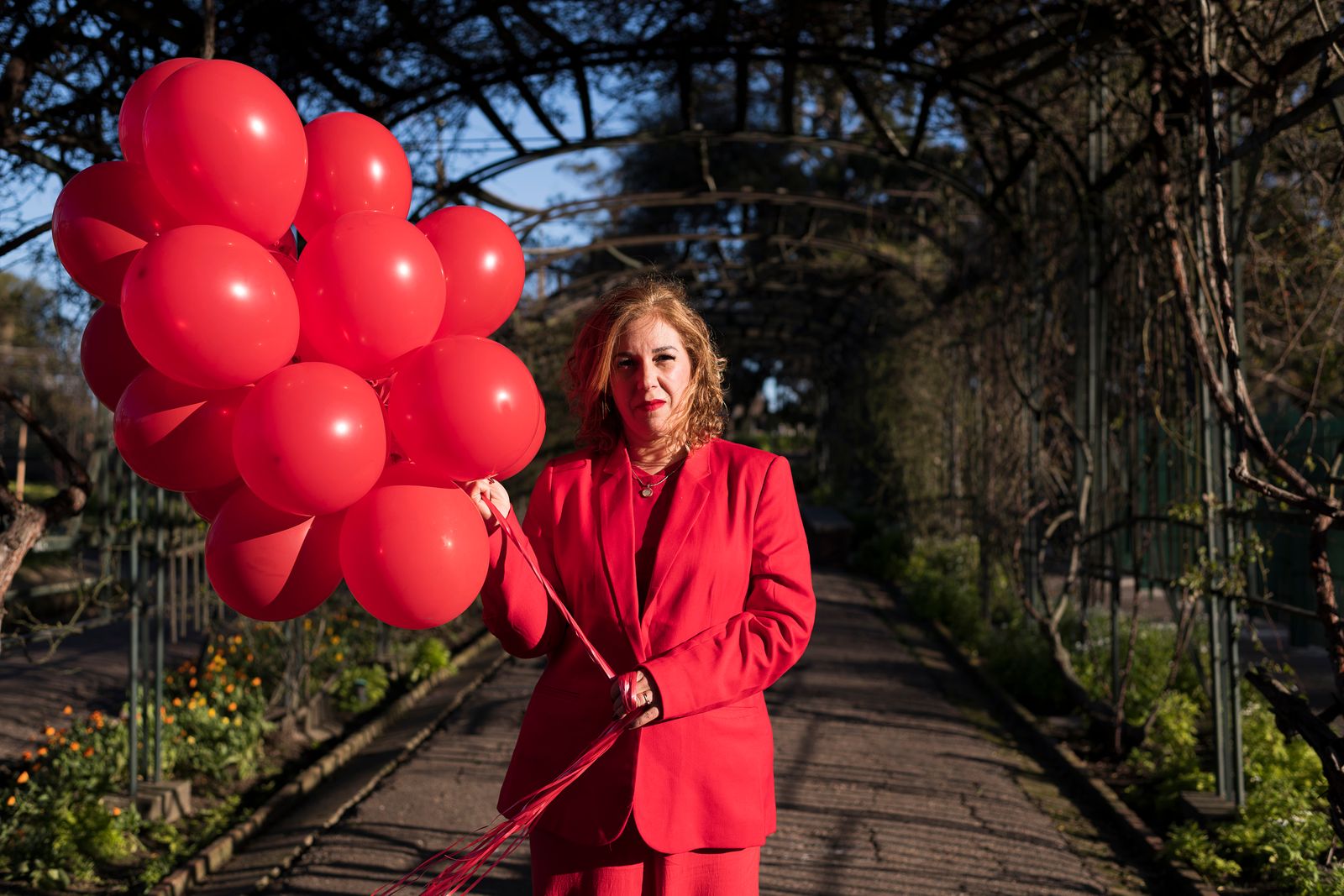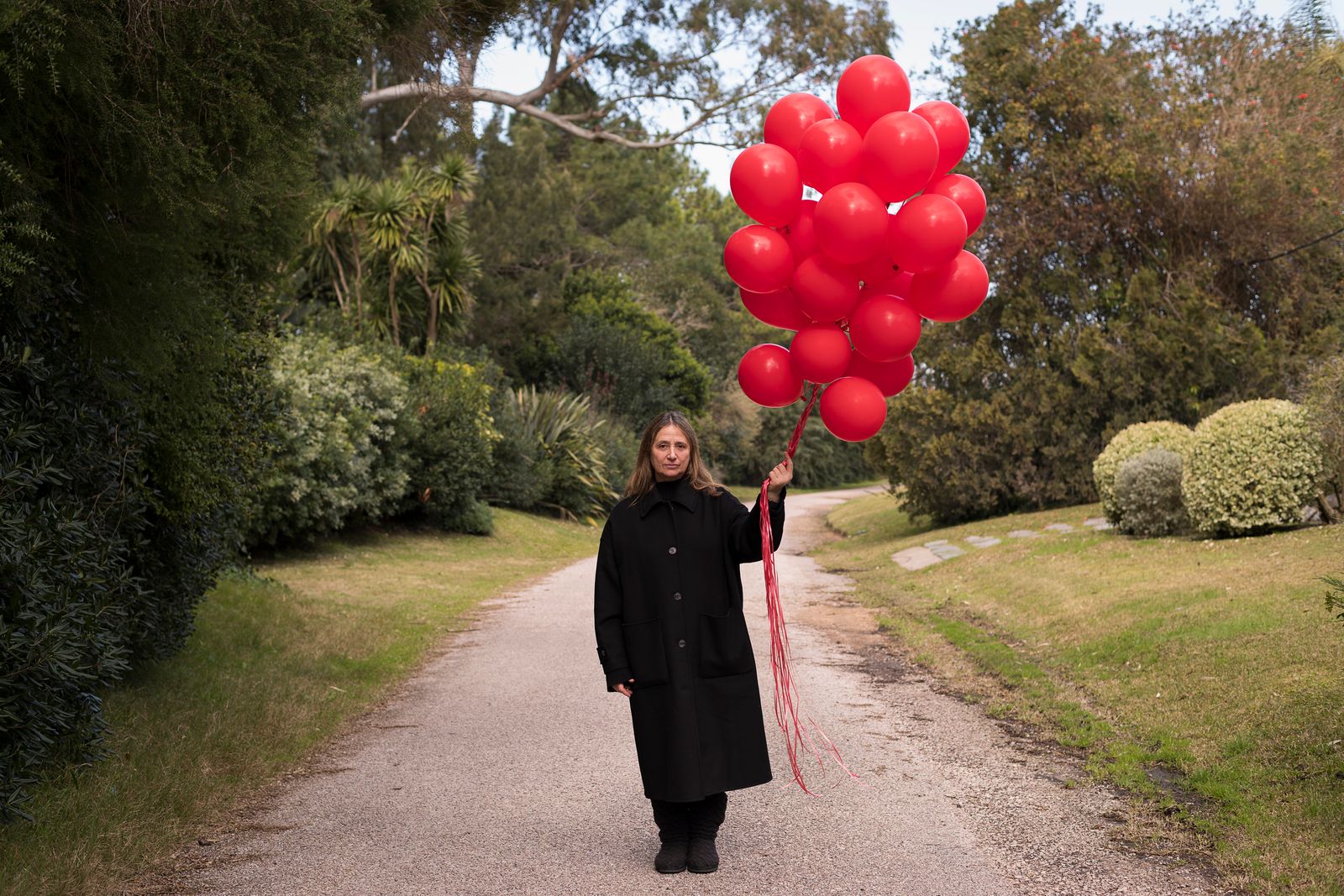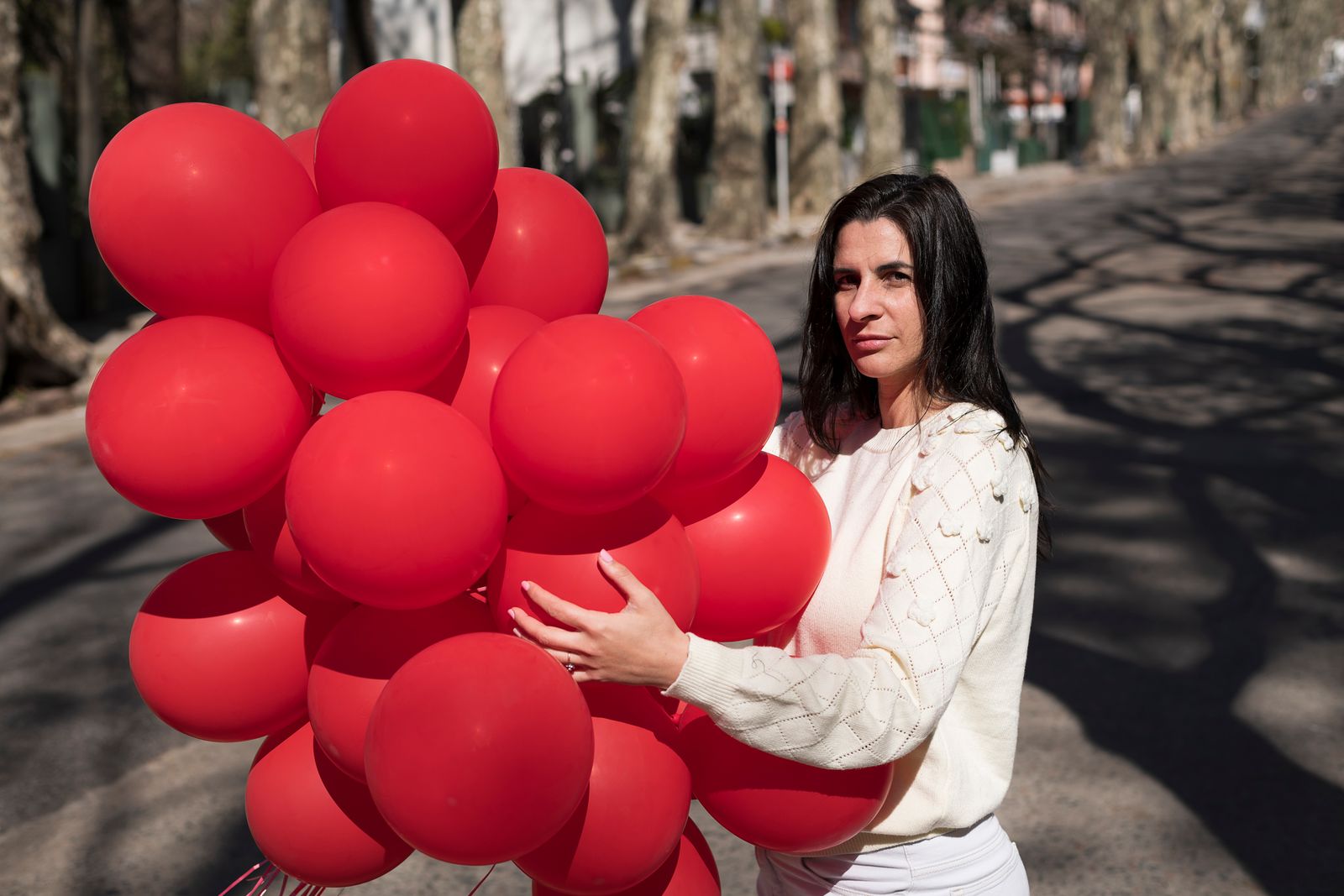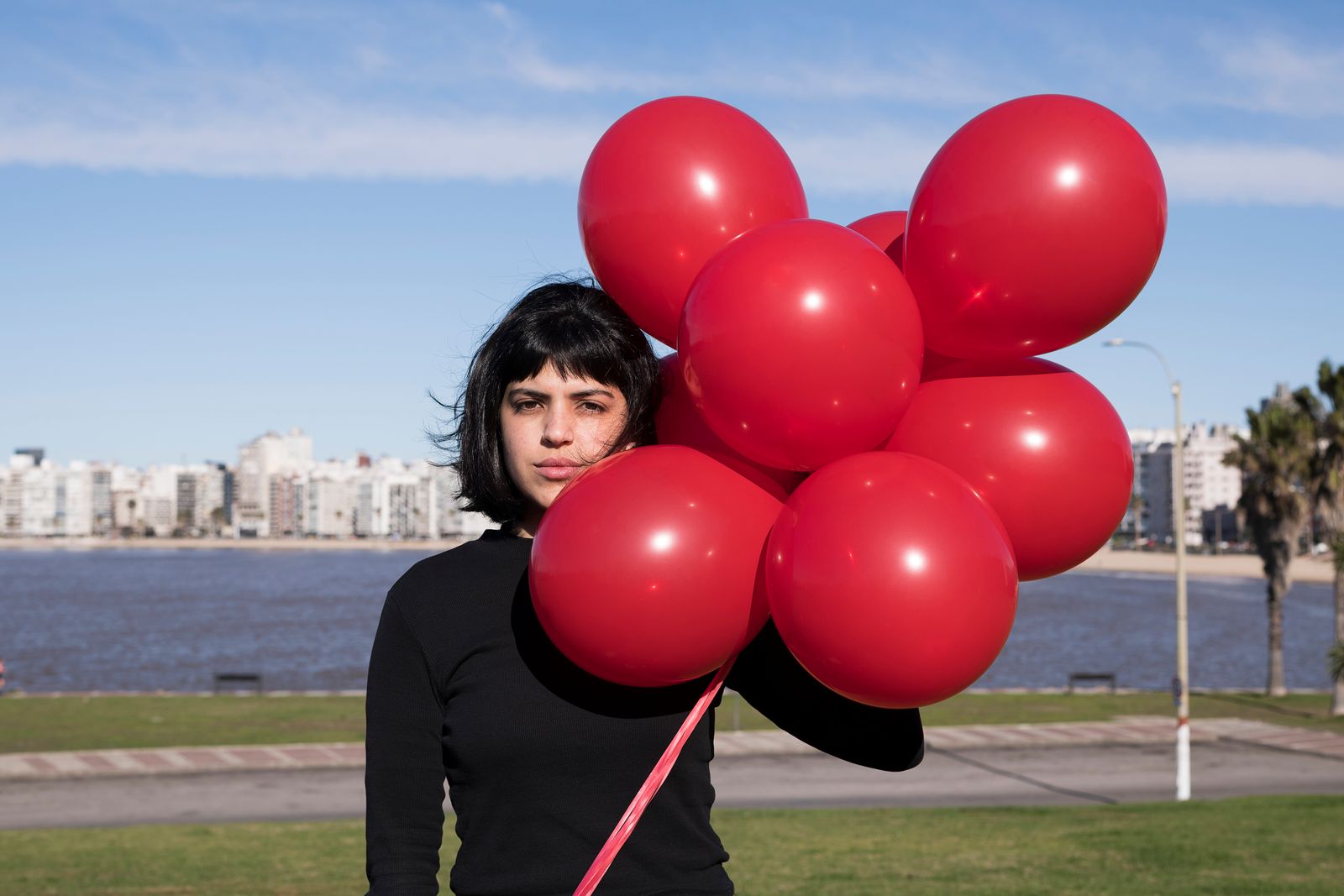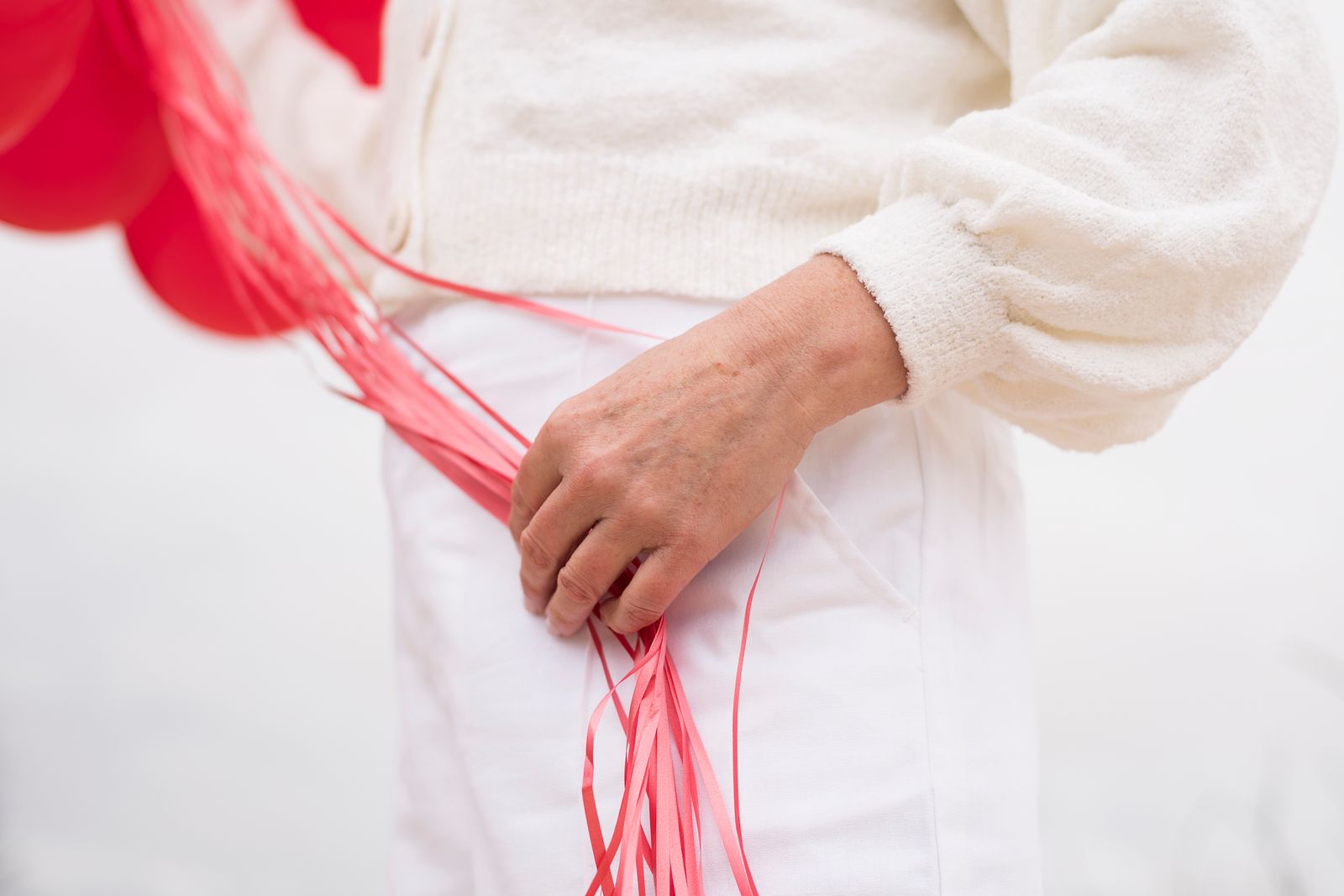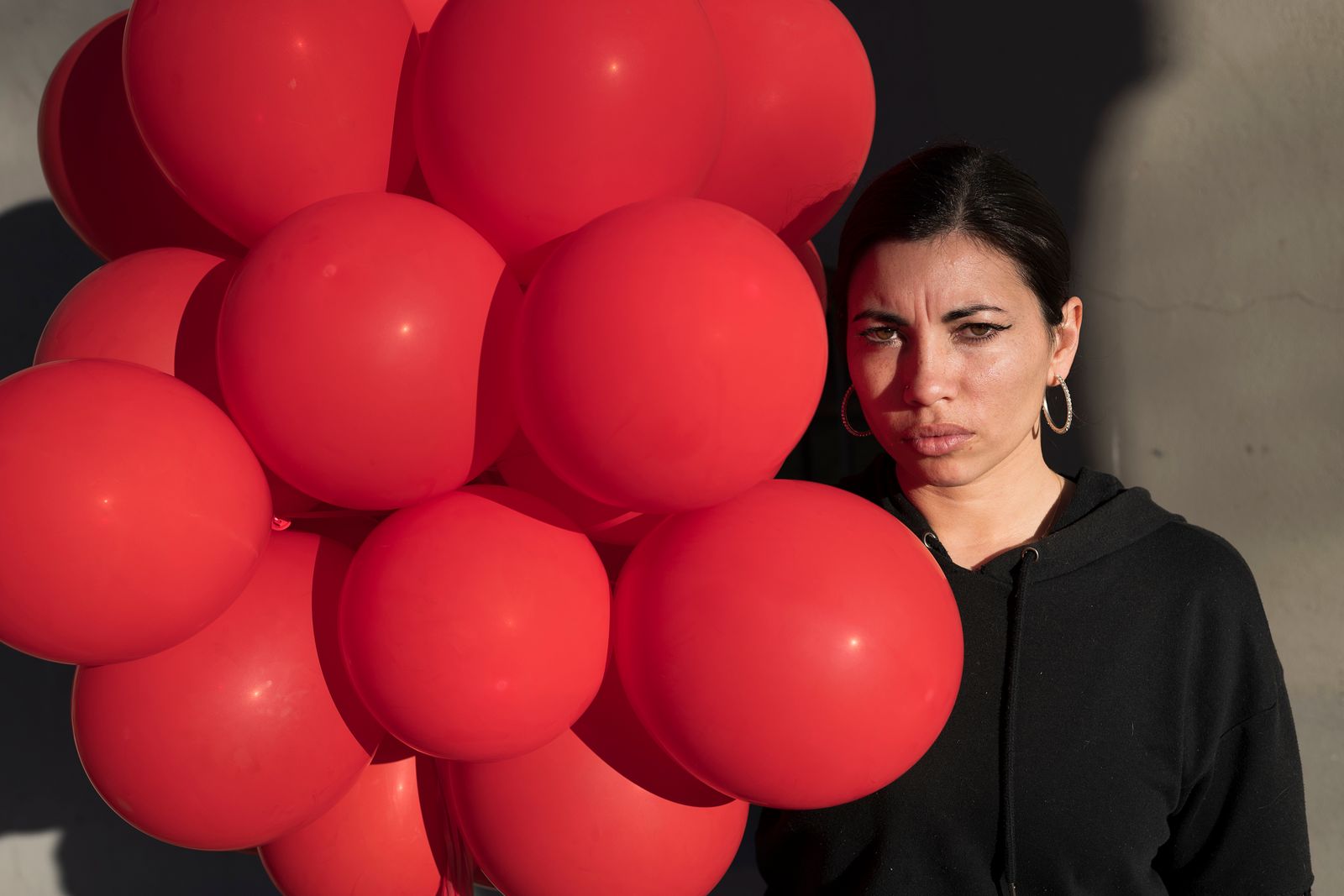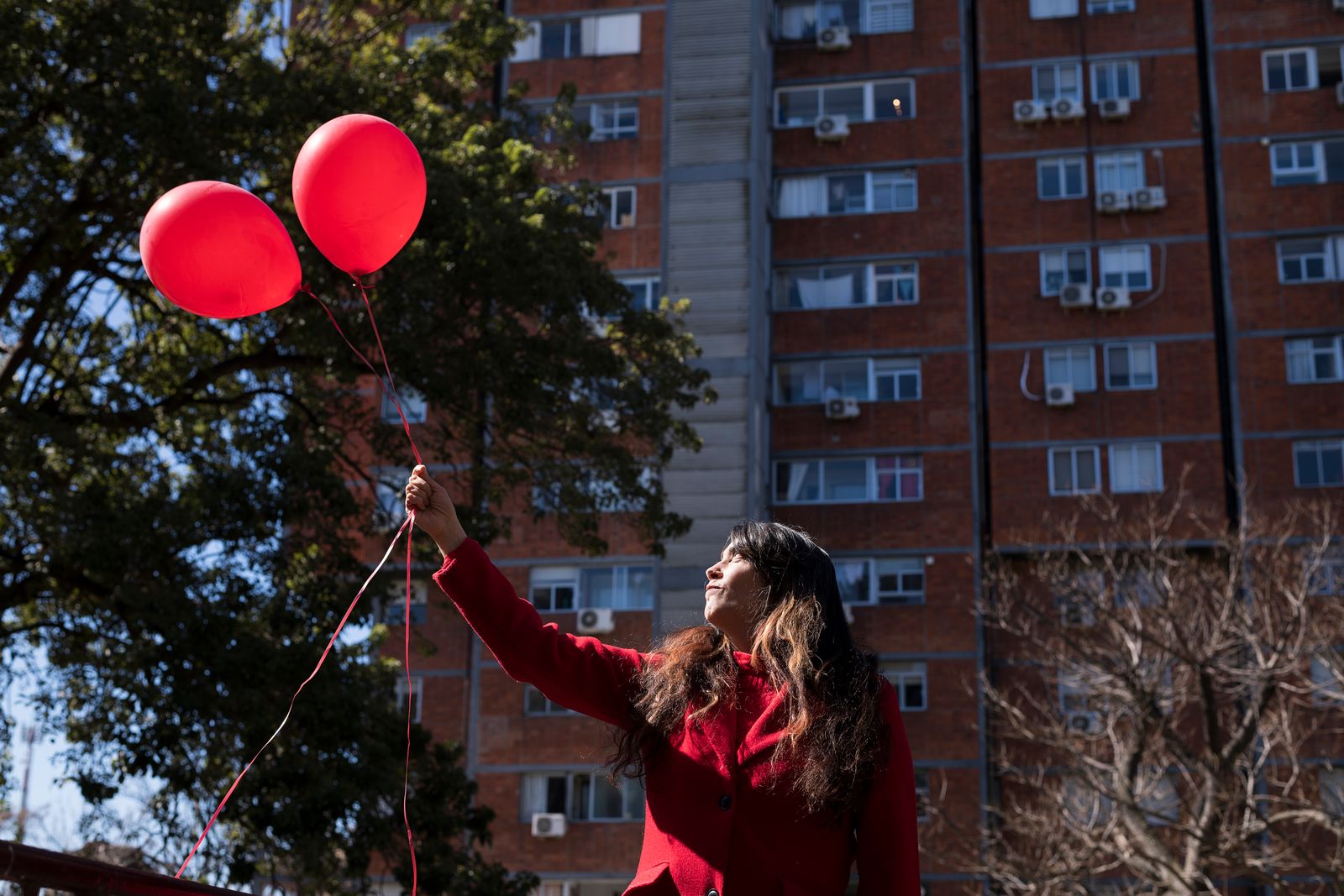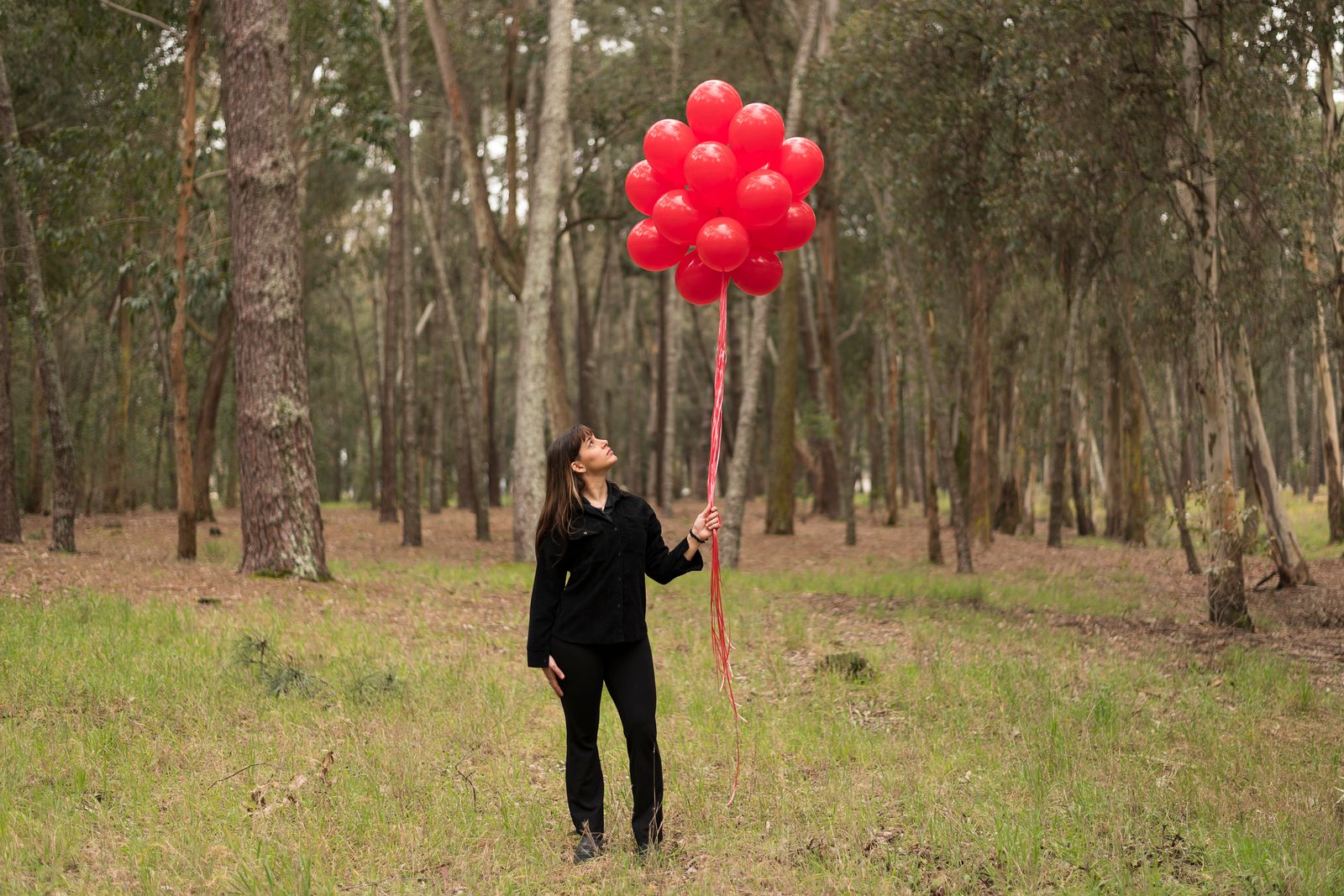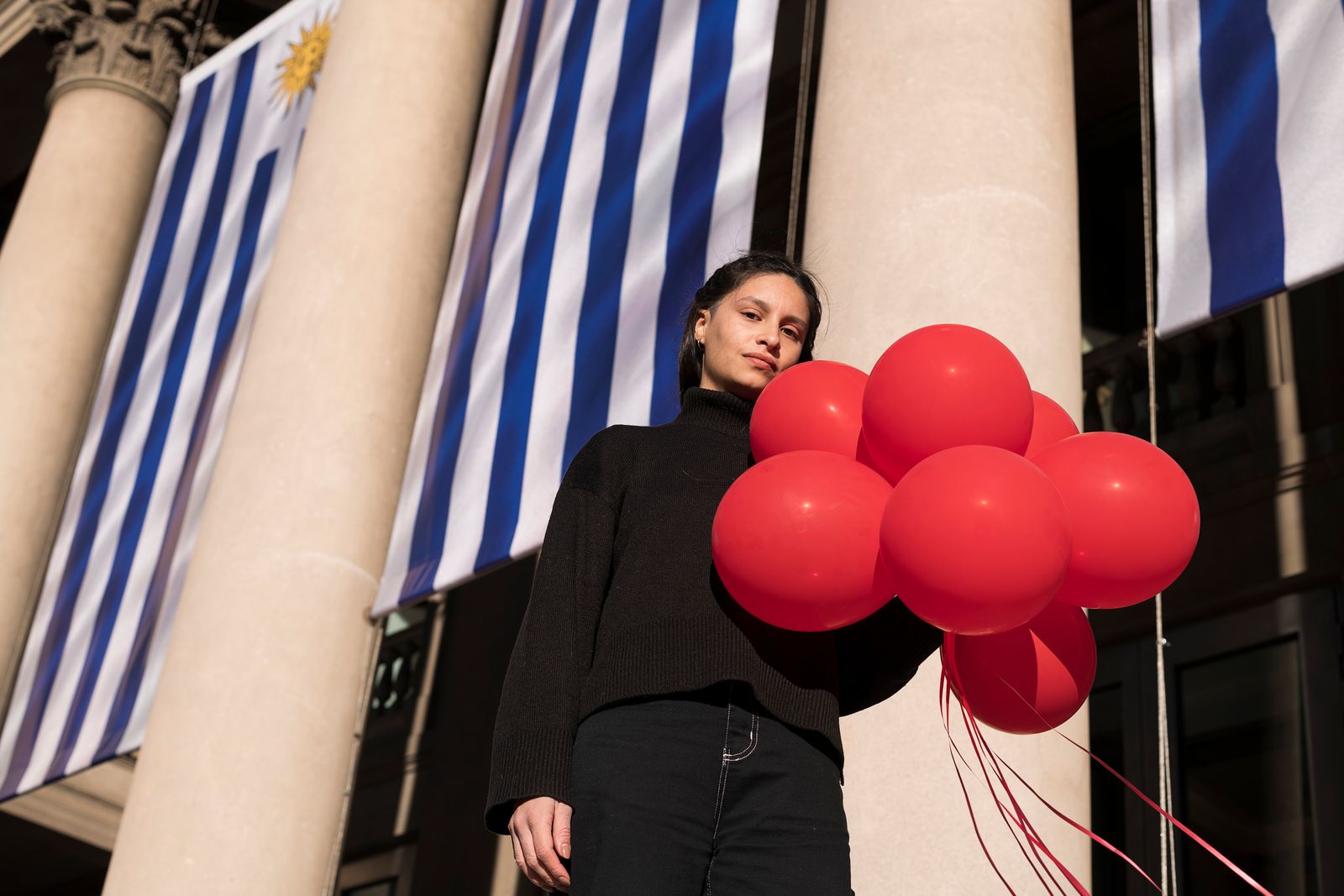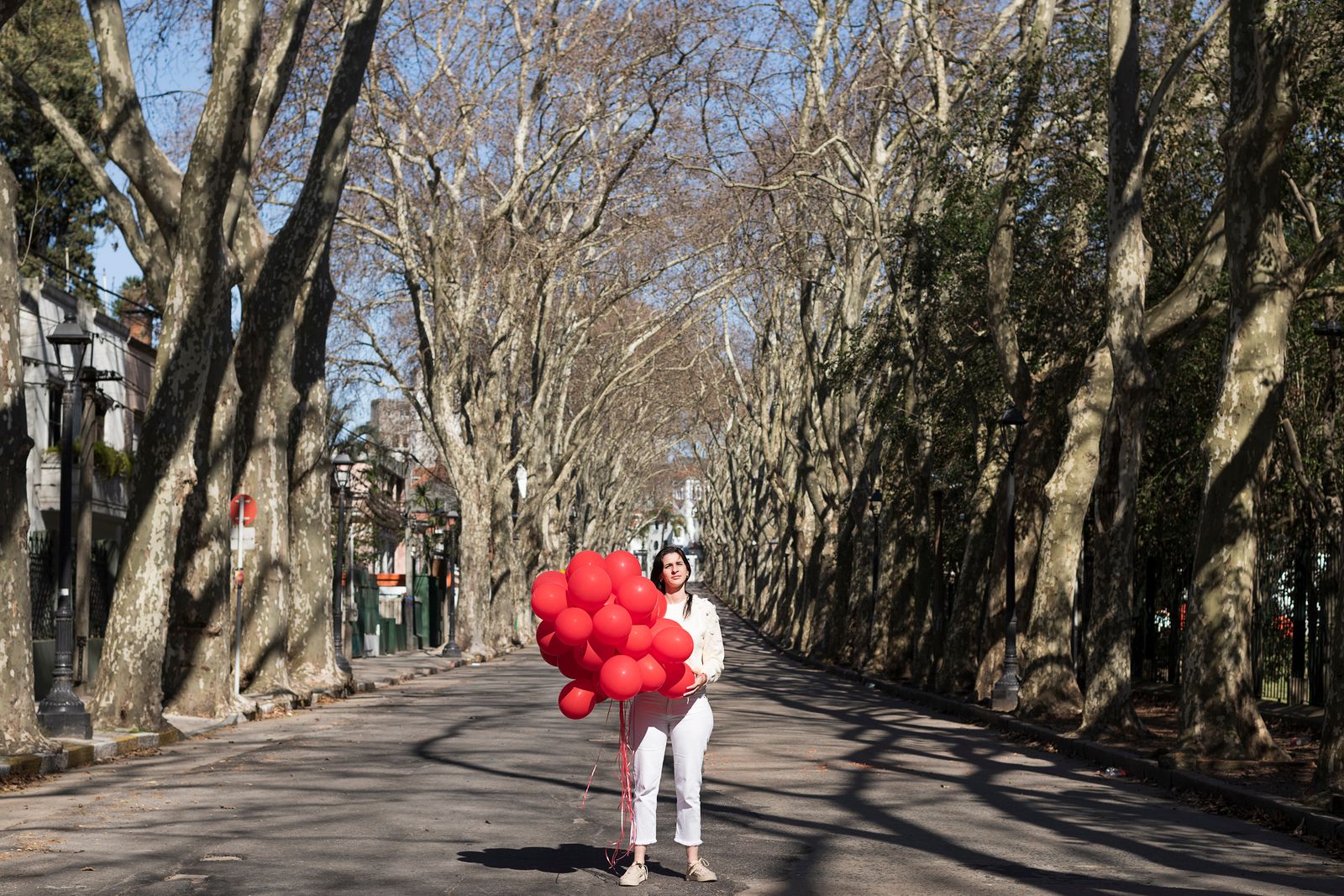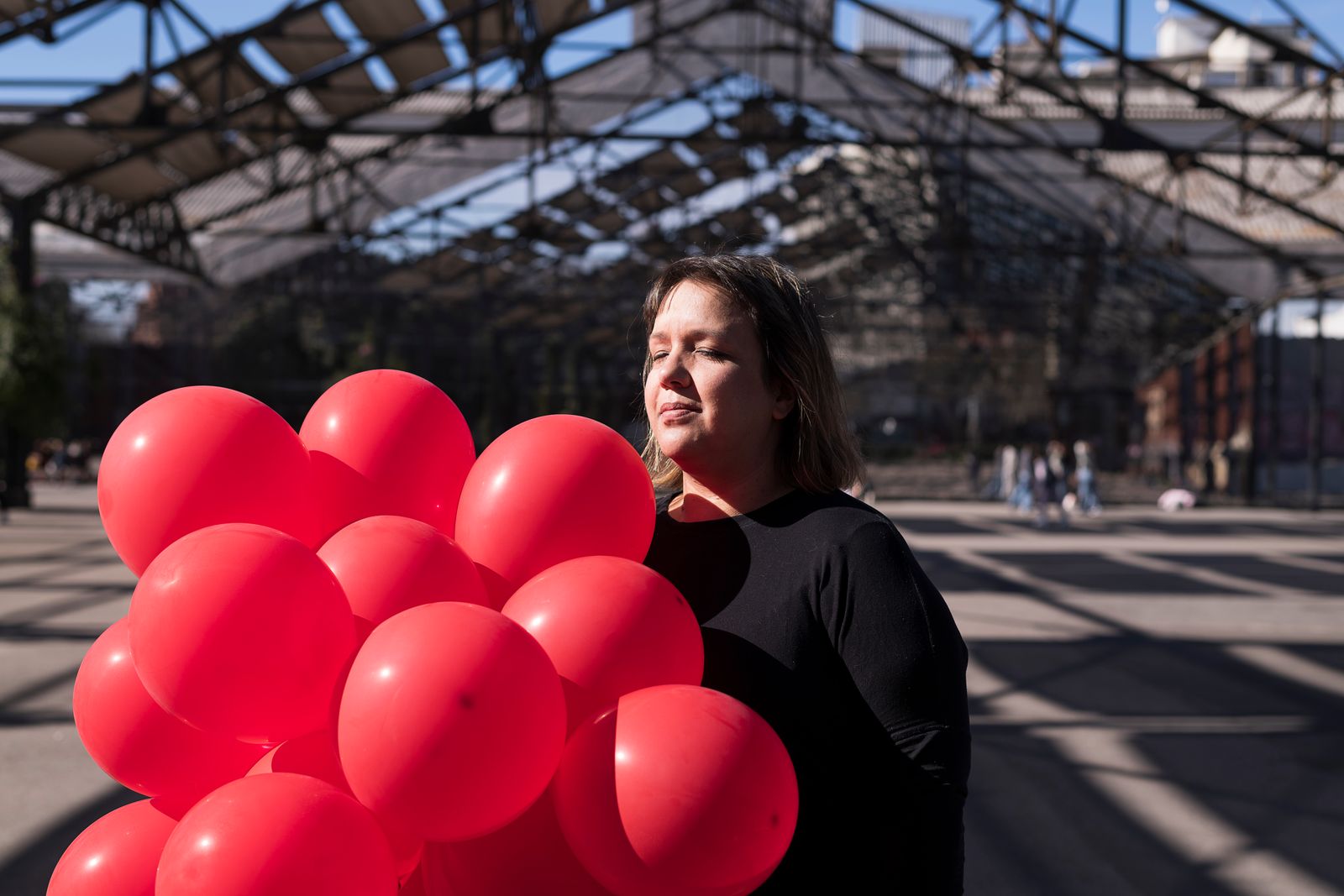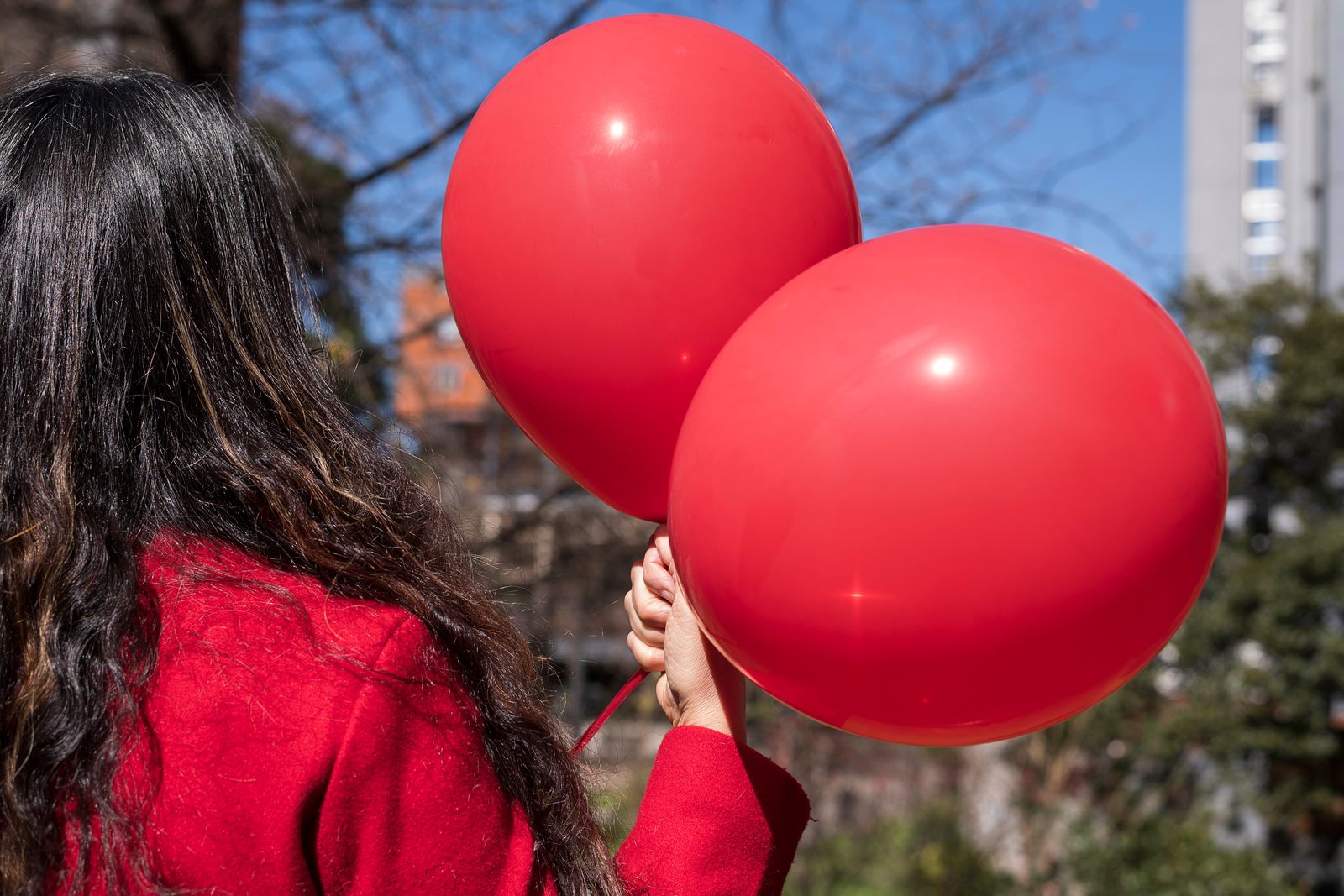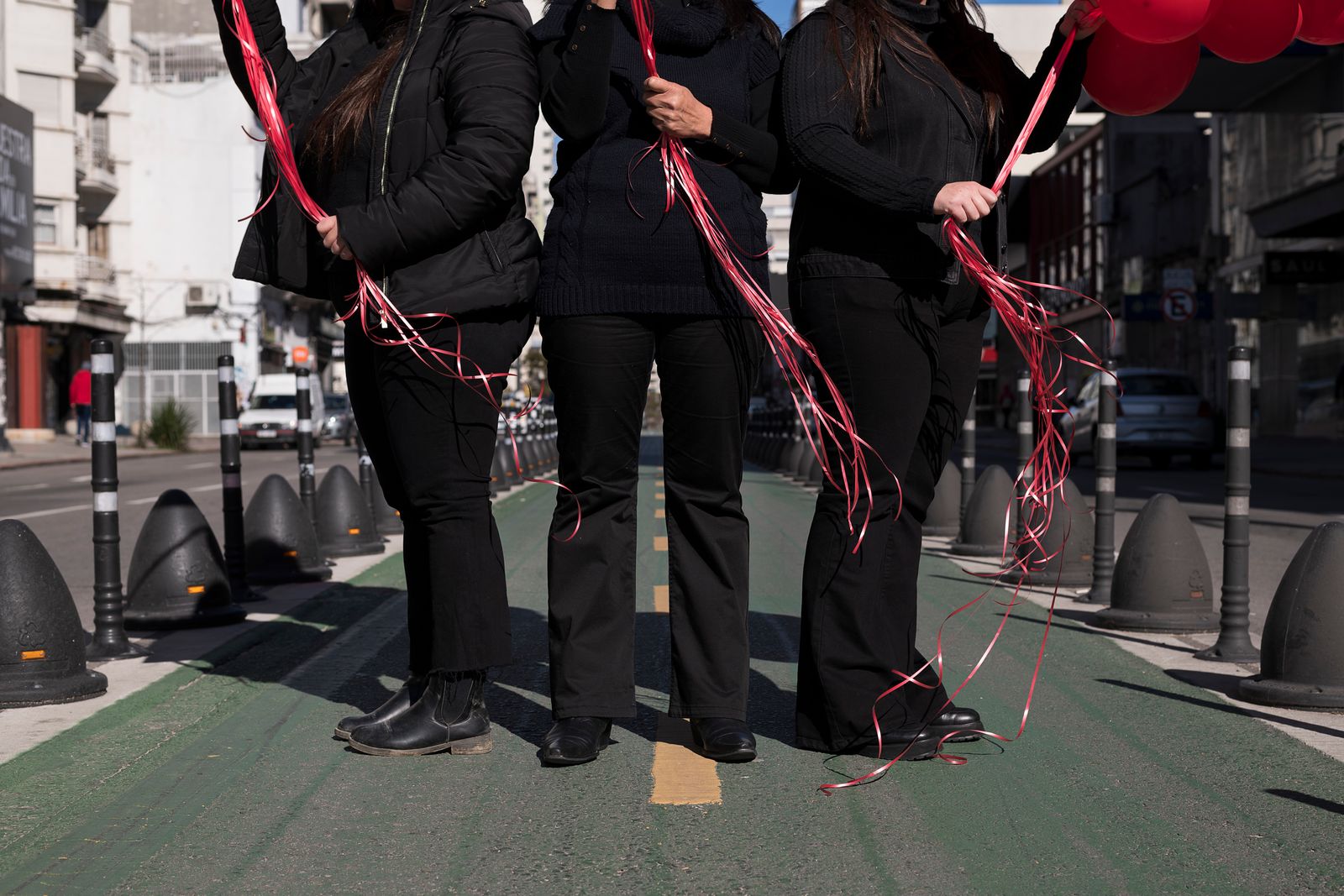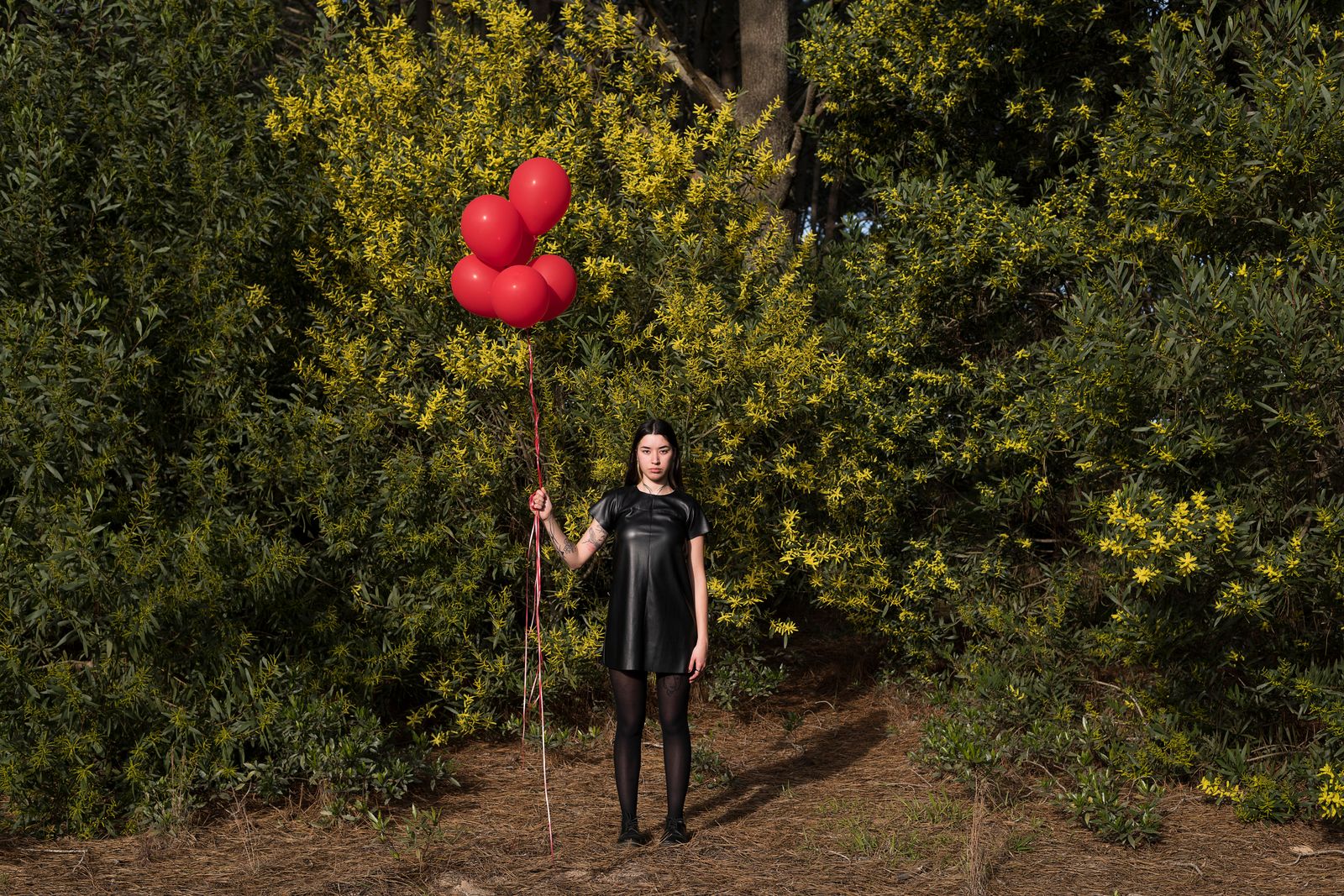Choreographies of silence
-
Dates2025 - Ongoing
-
Author
- Topics Archive, Contemporary Issues, Documentary, Fine Art, Portrait, Social Issues
- Locations Punta del Este, Canelones, Montevideo Department, Uruguay
Choreographies of Silence is a collaborative photography project with Uruguayan women that addresses gender violence and resilience, using red helium balloons as a metaphor for time, memory, and collective resistance.
Choreographies of Silence is an ongoing photographic project that addresses gender violence and resilience through symbolic and participatory language. Each portrait is the result of a collaborative encounter with Uruguayan women who have experienced different forms of abuse. They choose the landscape that resonates with their story and monochromatic clothing (red, black or white/beige) so that the image speaks in their own voice.
The central symbol is red helium balloons: each one represents a year since the act of violence. Their lightness and volume embody a fragile yet enduring burden. The colour red also evokes blood, passion and life force, and appears on many flags as an emblem of struggle and resistance.
The work began as research in 2023 and photographic production in 2025. So far, sixteen sessions have been held in Montevideo, Maldonado, and Canelones. In 2026, it will expand to the remaining sixteen departments of the country, integrating new participants and landscapes to build a collective visual autobiography of more than thirty women. This territorial expansion seeks to decentralise cultural production in Uruguay—a small but culturally diverse country—and actively involve urban and rural communities in dialogue with local feminist organisations and leaders.
Choreographies of Silence aims to open an urgent public conversation on gender-based violence, avoiding sensationalism and revictimisation, and placing women’s agency at the centre of the creative process. The body is presented as a living archive of memory and resistance, while metaphor and symbol activate critical reflection.
The project engages with feminist traditions and thinkers who understand the body as a territory of symbolic dispute, such as Barbara Kruger and David Pérez; with Gisèle Freund’s conception of photography as a political document; and with Mieke Bal’s “poetics of the trace.”
This work also builds on the legacy of artists who have transformed violence into visual testimony and protest: Shirin Neshat, who turns the female body into a space of political defiance; Newsha Tavakolian, whose portraits expose the silence imposed on Iranian women through subtle yet powerful symbolism; Donna Ferrato, whose raw documentation of domestic violence in the US revealed the urgency of bringing hidden abuse into public view; and Jana Leo, who converts her own experience of sexual violence into a structural critique of patriarchy and urban space. Within Latin America, it aligns with genealogies that have used the body and public space as devices of denunciation, including Guatemalan artist Regina José Galindo, internationally recognised for her performances, Mujeres de Negro Uruguay, and the collective Diez de cada Diez, which confronts femicide through collective interventions in the streets.
Rooted in Uruguay but with international resonance, the project confronts a systemic issue that permeates our societies, offering from Latin America a feminist and poetic narrative on violence and resilience.
